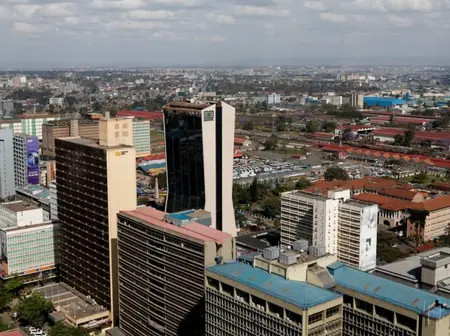Kenya’s economy grew 5.0% in the second quarter of 2025, a faster pace than the 4.6% in the same period last year, supported by steady gains in agriculture, services, and a rebound in construction and mining, according to new data from the Kenya National Bureau of Statistics.
Transport and storage rose 5.4%, boosted by higher diesel consumption, a 10.3% increase in Standard Gauge Railway passenger numbers, and stronger cargo volumes.
Construction returned to growth, expanding 5.7% after a 3.7% contraction a year earlier, supported by surges in cement consumption and imports of steel and bitumen. Mining and quarrying grew 15.3 percent, rebounding strongly after a 2024 slump.
Electricity and water supply climbed 5.7%, lifted by higher geothermal, wind, and thermal generation, though hydro and solar output declined.
Selected Sector Growth Rates, Q2 2025:
| Sector | Nominal (KSh Bn) | Growth Rate (%) |
|---|---|---|
| Agriculture, Forestry & Fishing | 1,268.4 | 4.4 |
| Transport & Storage | 652.3 | 5.4 |
| Financial & Insurance | 411.9 | 6.6 |
| Construction | 357.7 | 5.7 |
| Mining & Quarrying | 72.6 | 15.3 |
| Electricity & Water Supply | 128.2 | 5.7 |
Inflation eased to an average of 3.89% in the quarter, down from 4.87% in 2024, driven by lower food and beverage prices. The shilling strengthened 1.2% against the US dollar but weakened against the euro, pound, and yen. The current account deficit widened to KSh 83.7 billion from KSh 47.4 billion a year earlier.
On the financial side, the Central Bank cut the policy rate to 9.75% in June from 13.0% in 2024, easing borrowing costs. Broad money supply grew 8.1% to KSh 6.45 trillion, while domestic credit expanded 10.5% to KSh 7.56 trillion, reflecting both government borrowing and private sector uptake. The Nairobi Securities Exchange 20-share index surged 47% to 2,440 points, with traded shares more than doubling to 580 million units worth KSh 12 billion.
Accommodation and food services slowed to 7.8% growth, down from 35% a year earlier, as international visitor arrivals moderated. Information and communication expanded 6.0%, supported by a 38% jump in mobile data usage and higher voice traffic, though mobile money transactions declined 1.4%.
Table 2: Selected Macroeconomic Indicators, Q2 2025
| Indicator | Q2 2024 | Q2 2025 |
| Average Inflation (%) | 4.87 | 3.89 |
| Current Account Balance (KSh Bn) | -47.4 | -83.7 |
| CBR (%) | 13.0 | 9.75 |
| Broad Money Supply (KSh Trn) | 5.97 | 6.45 |
| Domestic Credit (KSh Trn) | 6.84 | 7.56 |
| NSE 20 Index | 1,656 | 2,440 |
Kenya’s Q2 data shows the economy is gaining momentum with broad-based sectoral growth, but challenges remain in agriculture exports, domestic tourism, and the external balance, underscoring the delicate balance between recovery and underlying structural weaknesses.

Leave a Reply